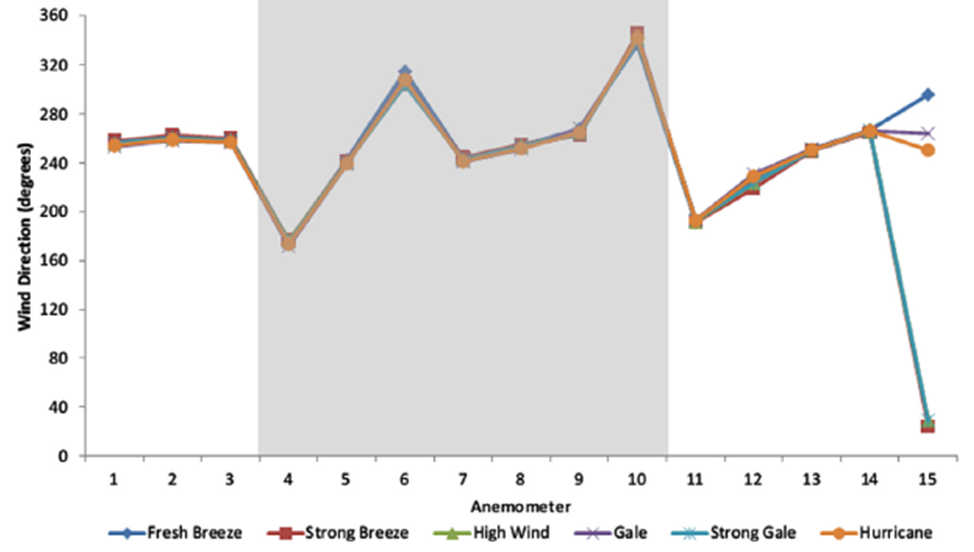Maspalomas is a coastal dune field situated on the south coast of Gran Canaria. With an annual precipitation of less than 100 mm, the area is very arid with sparse vegetation. Predominant winds blow from the northeast, forcing the dunes to migrate toward the south west. Mapping of dune migration has found that those closest to the shoreline, move faster than those further inland.
Simulated wind speed 0.5 m above the surface of the study site. Vectors on the map represent wind speed and direction at 61 dune crests within the study area.
To explore why dune migration is faster near the beach, a 3D computational fluid dynamics (CFD) simulation was applied over the surface of the dunes. The results found that although flow was faster on the taller, landward dunes, those dunes also created large zones of flow re-circulation which will cause sediment, transported from the windward slope and crest, to be deposited.
Conversely wind in lee of the lower dunes created little to no flow reversal allowing sediment eroded from the dune to be transported further landward into the dune field.
Top image represents flow across a 640 m cross sectional profile of the study area. The middle image shows flow in lee of a large inland dune. note the large zone of flow separation and re-circulation. The bottom image is of a smaller dune close to the shoreline behind which flow slows, but remains attached.
This post is a summary of an article published by Jackson et al., 2013 in the Journal of Coastal Research. Please click the link below to view the full article:

























.png)



